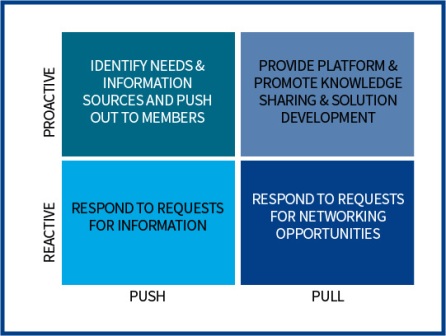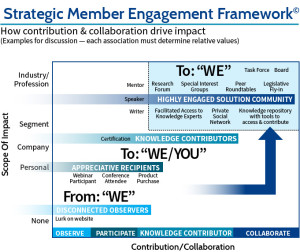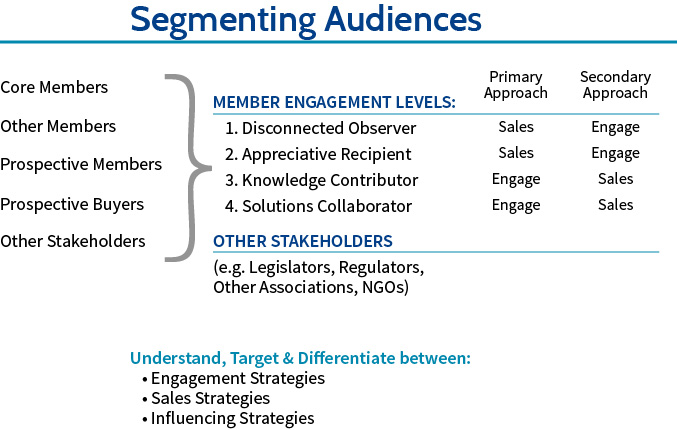Members Feel Connected? With year end approaching, member retention may loom large for any Association. Understanding why members leave gets to the heart of issues like retention and member connectedness. Connectedness is the critical organizational outcome that drives long term success, and unlike “loyalty,” it can be measured in behavioral terms. The 3 C’s capture how member knowledge “contributions” lead to “collaboration” and also stimulate and reinforce “connectedness”.
Why Members Leave
In the Strategic Member Engagement survey (http://bit.ly/1g8g1J2), executives rated the frequency at which members leave for 11 potential reasons. While the ranking changed slightly, both professional society and trade association executives agreed the top 5 reasons that members leave are:
1) Insufficient perceived value (ROI)
2) Retired, changed companies, in transition
3) Joined for a one time purchase discount (e.g. meeting registration)
4) Acquired by another company that won’t pay the dues
5) Insufficient connection to their business/professional objectives
Connectedness
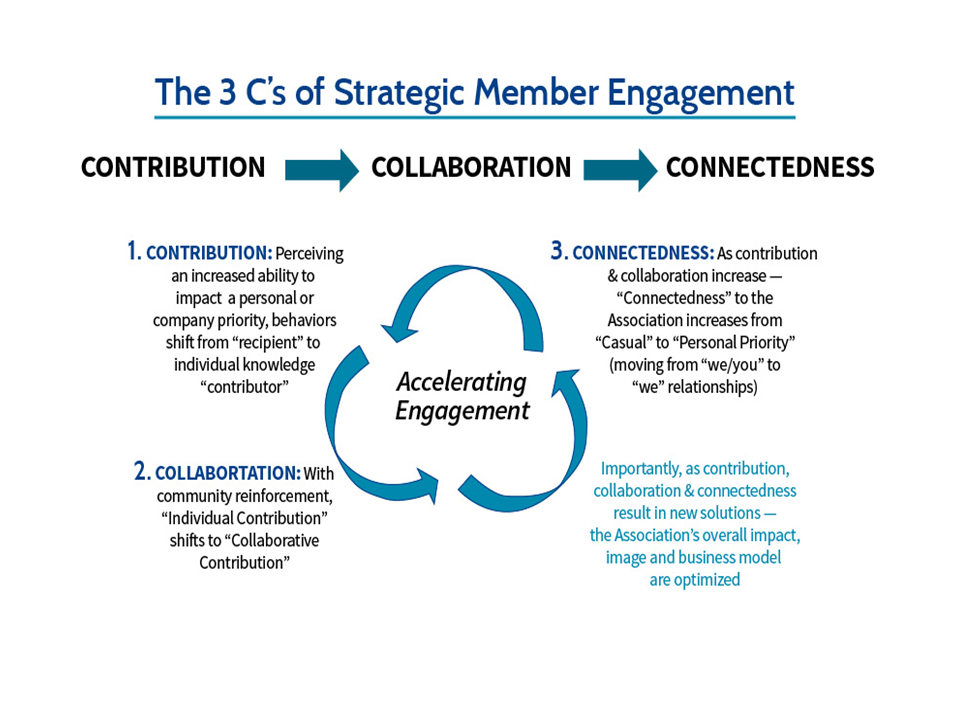 As shown in the graphic above, if an Association member perceives an opportunity to have an impact upon something he/she cares about, behaviors start to change from being a Recipient to a Knowledge Contributor. And for some, individual contribution that is recognized and openly appreciated leads to Solutions Collaboration with other knowledge contributors.
As shown in the graphic above, if an Association member perceives an opportunity to have an impact upon something he/she cares about, behaviors start to change from being a Recipient to a Knowledge Contributor. And for some, individual contribution that is recognized and openly appreciated leads to Solutions Collaboration with other knowledge contributors.
This is the point at which association magic begins! It’s when contributions and collaboration evolve into a sense of belonging that is called “Connectedness” ( http://bit.ly/1ATwwUe).
Members Feel Connected?
Members leave when they perceive insufficient value, insufficient connection to their business/personal objectives, insufficient opportunity to have an impact, or they really don’t want a bundled package of offerings and only joined for a discount.
Association’s driving member connectedness with the 3 C’s (contribute, collaborate, connect) provide differentiated member value and are better positioned to accelerate their retention and overall financial performance.
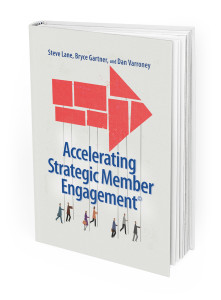 Free eBook is available for all Association Executives at www.potomaccore.com, www.icimo.com, and www.verticalleapconsulting.com.
Free eBook is available for all Association Executives at www.potomaccore.com, www.icimo.com, and www.verticalleapconsulting.com.




